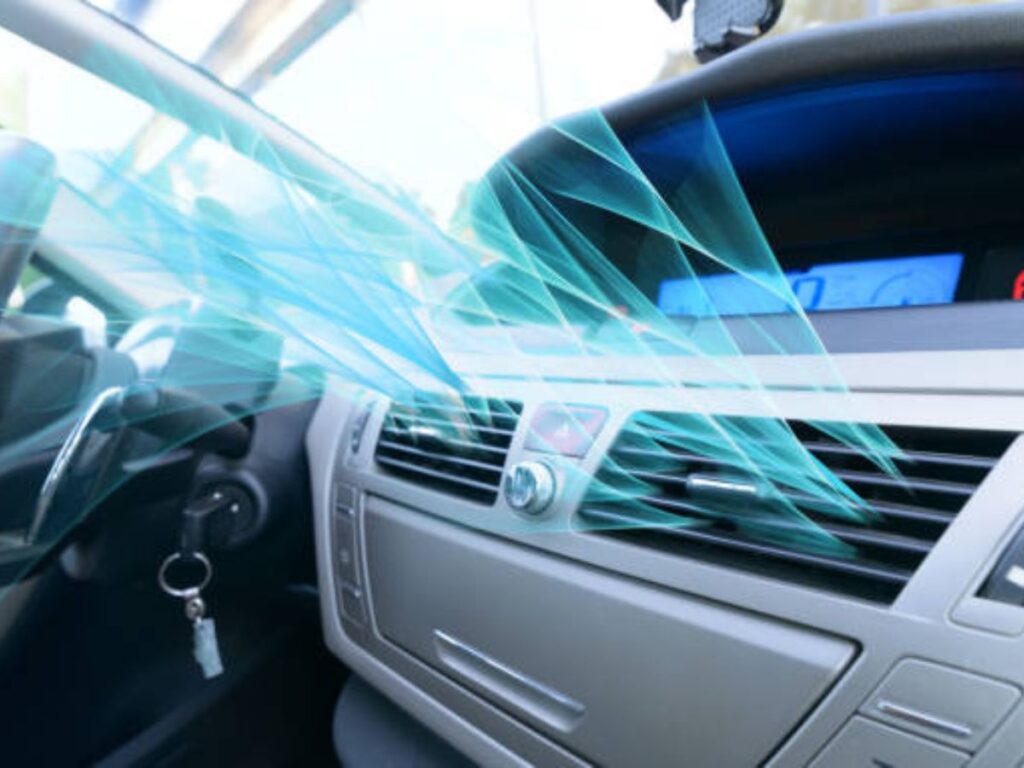In this article, you are going to know about the Types of hard drives: SATA vs. SSD vs. NVMe. I am going to tell you about what is a hard drive, what is its main function, and bout its three types. To store software and data, every computer has at least one internal hard drive.
This drive is frequently referred to as the C drive if you are running Windows. On a Mac, it is simply referred to as a hard drive. You can connect several external hard drives or add more internal hard drives if you require more storage space.
Hard drives come in three different flavors: SATA, SSD, and NVMe. Learn about each type and its advantages and disadvantages along with in what condition you should choose them in this article. This should assist you in selecting one over the competition, whether you plan to purchase, construct, or upgrade a new PC. Let’s get started!
TABLE OF CONTENT:
- WHAT IS A HARD DRIVE
- WHAT DOES A HARD DRIVE DO
- TYPES OF HARDRIVE
Table of Contents
ToggleWHAT IS A HARD DRIVE
A non-volatile data storage device is a hard drive. It is often installed inside in a computer and fastened directly to the motherboard’s disc controller. It has one or more platters inside an airtight container. Using a magnetic head that spins quickly across the platters, data is written to them.
The hard drive of a computer houses all of the software that has been installed on it, along with all of the data files that are created and used by it. This applies to any written content you have created and downloaded, including visual and aural components.
A permanent storage device, such as a computer drive/ hard drive, replaces transient memory like random-access memory (RAM). By doing this, you can be sure that the data will be safely stored on the disc when you shut down the computer and that you may access them once more when you switch it back on.
WHAT DOES A HARD DRIVE DO
The top main functions of a hard drive are:
- Storage
- Backups
- Data sharing
- Electronic editing
- Gaming
The physical device that houses all of your digital stuff is a hard disc. Digital stuff that is kept on a hard drive includes your papers, photos, music, videos, applications, application preferences, and operating systems.
The size of each file that is kept on a hard drive is how it is identified. Text documents are often very small, whereas images, music, and videos all have bigger file sizes. Digital files are measured in megabytes (MB), gigabytes (GB), and terabytes (TB) on a hard drive (TB).
TYPES OF HARDRIVE
The hard drive has three main types SATA, SSD, and NVME. After reading this article you can see the difference between SATA vs SSD vs NME.
SATA:
(SATA) stands for Serial Advanced Technology Attachment and is one of the best type of hard drive. These hard drives are still regarded as the most widely used form of hard drives in use today as one of the HDD types. The desktop and laptop hard drives have the default (SATA) interface.
One of the HDD varieties, almost all computer motherboards, and operating systems are supported. 3.5-inch hard drives for desktop computers and 2.7-inch compact hard drives for laptop computers are the two standard sizes for SATA drives.
STORAGE- The price of a single drive is lower than that of any other drive type, and it can contain anywhere between 500 GB and 16 TB.
SPEED- Depending on the model chosen, the SATA external hard drive disc rotates at various rates. To boost data transfer, the speed can be increased to 10,000 RPM. Large servers can even use storage systems with 15,000 RPM. Higher RPM SATA drives, nevertheless, also have a higher failure rate.
PROS-
- SATA is of Low price
- SATA has larger disc sizes
CONS-
- One of the biggest drawbacks of SATA drives is mechanical failure.
- SATA is not laptop hard drives
- SATA demands routine de-fragmentation
Learn more about how much you should spend on a laptop in 2022?
WHEN TO CHOOSE SATA:
A SATA will offer the performance you require at a lesser cost than an NVMe and SSD if you only use your computer to surf the internet, store documents and low-resolution photographs, or utilize software like word processors and excel sheets. SATA can also be your choice if you need a lot of storage have a limited budget or you need a hard disc for common use.
SSD HARD DRIVE:
SSD is one form of the computer hard drive that stands for (Solid-state drive). It is currently leading the development of storage technologies. Unlike conventional hard drives, which have rotating magnetic discs, this storage device is entirely made of memory chips.
The SSD data is kept on a semiconductor chip. SSDs function by utilizing the idea of flash memory. All of the data is kept in non-volatile flash memory.
STORAGE- SSD drives range in size from 120 GB to 2 TB, and they cost 2-4 times as much as a comparable SATA hard disc. These drives are excellent for storage on the fly because they have no moving components, are far more durable, and come in form factors designed exclusively for laptops.
SPEED- Even a drive that performs less than SATA external hard drive is comparable in terms of speed, though exact numbers are difficult to determine because they depend on the manufacturer and form factor.
PROS-
- Because no needle needs to move when reading or writing data, they are significantly faster than SATA drives.
- The operating power consumption of the SSD is significantly decreased.
- The SSD’s lack of susceptibility to failure is another benefit.
- more robust, particularly for laptops
CONS-
- The price of SSD is its main drawback. The price of an SSD is three to four times higher than that of a SATA hard drive for the same amount of capacity.
- As smaller disc size. The drawback is that there aren’t as many sizes
WHEN TO CHOOSE SSD?
If you are a PC enthusiast, gaming lover, or in high-performance technological industries, wanted laptop upgrades, and want quick storage under 2 TB you should choose SSDs because their incredibly quick access times and great throughput made up for their higher price. But over time, they have evolved into the norm for popular, low-cost laptops and PCs.
NYME HARD DRIVE:
NVME which stands for (nonvolatile memory express) is a type of SSD that is plugged into PCI Express (PCIe) slots on motherboards. For flash and next-generation (SSDs), NVME is a revolutionary storage access and transport protocol that offers the highest throughput and quickest reaction times yet for all kinds of enterprise workloads.
Users expect ever-faster reaction times in both consumer and corporate apps today, even though the applications themselves are becoming incredibly sophisticated and resource-intensive. Nonvolatile memory is utilized by the NVME specification in a variety of computing settings. Additionally, it can be expanded to use yet-to-be-developed persistent memory technologies, making it future-proof.
STORAGE- NYMe has a storage capacity of 960GB to 15.36TB
SPEED- This external hard drive is particularly quick because they were made to hold graphics cards initially. NVMe drives have interface rates of up to 32 Gb/s and throughputs of up to 3.9 GB/s. That can be very helpful if you’re playing a game or editing high-definition videos, both of which require a lot of disc throughput.
PROS-
- Contrary to protocols created in the era of mechanical hard disc drives, NVMe takes advantage of multicore CPUs and terabytes of memory in addition to solid-state storage.
- The fastest disc type currently available
- Toto efficiently processes and modifies data, NVMe storage also makes use of command sets that have been simplified.
CONS-
- NYME is highly expensive.
- NYME is only accessible on desktop PCs.
WHEN TO CHOOSE NYME?
If you don’t have a spending limit, constructing a server to house a storage-intensive application, and creating a powerful workstation or gaming computer you should prefer NYME. There are existing business applications for NVME storage where every microsecond counts:
Artificial intelligence (AI), machine learning (ML), big data, and advanced analytics apps for Real-time client interactions such as financial, e-commerce, and software sales agents and DevOps, allowing you to run more iterations in less time. So if you consider speed as your main target you should choose NYME.
CONCLUSION:
The conclusion of the Types of hard drives: SATA vs. SSD vs. NVMe is that the distinction between SATA, SSD, and NYME has been expertly discussed in this post. You must also take your demands into account before selecting one of these. Consider your budget and the amount of space you want.
It’s also important to note that you are not restricted to purchasing a single hard disc; PCs can often accommodate a number of them simultaneously. You will either get the performance you desire from a file depending on where you save it.
For instance, a typical setup for PCs that render video is to run video rendering software (such as Camtasia, Adobe Premier, etc.) on a quicker drive, such as an SSD or NVMe, and then move the finished product to a less expensive, larger SATA drive. Overall, this article has undoubtedly made your experience buying a drive lot cozier and more laid-back
FAQ’s
How long do hard drives last?
Hard drive lifespan is influenced by a wide range of factors, including brand, size, type, check health of the hard drive, and environment. Drives will last longer from more reliable manufacturers of solid hardware. However, the lasting period of a hard drive is from three to five years.
How to install a hard drive
- Turn off the computer.
- Removing the battery and the power
- Consult the computer handbook for safety measures and guidelines
- Remove any lingering electrical charge
- Holding down the power button for 15 seconds should work for the majority of computers, but check the instructions to be sure.
- Find the current storage or drive location.
- Remove the existing drive with care.
- If necessary, remove any original drive hardware.
- Connect the new drive to the system with caution.
- the computer back together
- reattach the computer’s battery
- Start the computer.
- recover the image or reinstall the operating system
- The original drive should boot normally if it was copied to the new one.
Which drive interface is the modern standard?
SATA drive interface is of the modern standard.




3 Responses